Exploring for Aquifer Conservation: Expedition Buteng begins in 10 days
More than just an edgy sport, cave diving has a crucial role to play in protecting our world’s precious freshwater. Many of us are lucky enough to have freshwater flow freely from our taps every time we turn them on. Seemingly endless showers and clean tap water can obscure the fact that we are dependent on aquifers—underground reservoirs of freshwater forged over deep time—for the freshwater on which all life on earth depends.
The United States National Ground Water Association states that ‘the majority of freshwater is actually found underground as soil moisture and in aquifers’ (NGWA 2024: para. 2). Some aquifers come in the form of gravel and sand deposits permeated with groundwater, while others—far more rare—comprise water-filled caves, underworlds, otherworlds, resting right beneath our feet. Aquifers contain as much as 98% of the world’s freshwater which makes these underland lakes, streams, and rivers profoundly important to us all.
Despite their importance, these cave aquifers remain some of the least explored places on earth. One such cave aquifer is the LauLawi cave system in South Sulawesi, Indonesia and the destination of Expedition Buteng, a multi-disciplinary project coordinated by Nixie Expeditions taking place from October 13 to November 3, 2024.
We are proud to collaborate on this project with DAN Europe as the organization supporting our risk mitigation and safety efforts without which this expedition would not be possible. We welcome everyone reading this to join us in the field on Instagram, Facebook, and LinkedIn as we will be coordinating numerous live Q&A sessions, meet-the-team, and on-the-field experiences for all ages online.
The remainder of this writing is an interview with three of our core team members— Rannvá Tórfríð Jørmundsson, Maria Bollerup, and Tamara May—who introduce our expedition, why we’re taking on this enormous project in the first place, what we hope to accomplish, and how we are managing the risk and safety aspects of Expedition Buteng. After all, with 28 expedition members in five different teams working in unexplored caves and jungle basecamp for almost a month, risk is ubiquitous and safety is paramount.
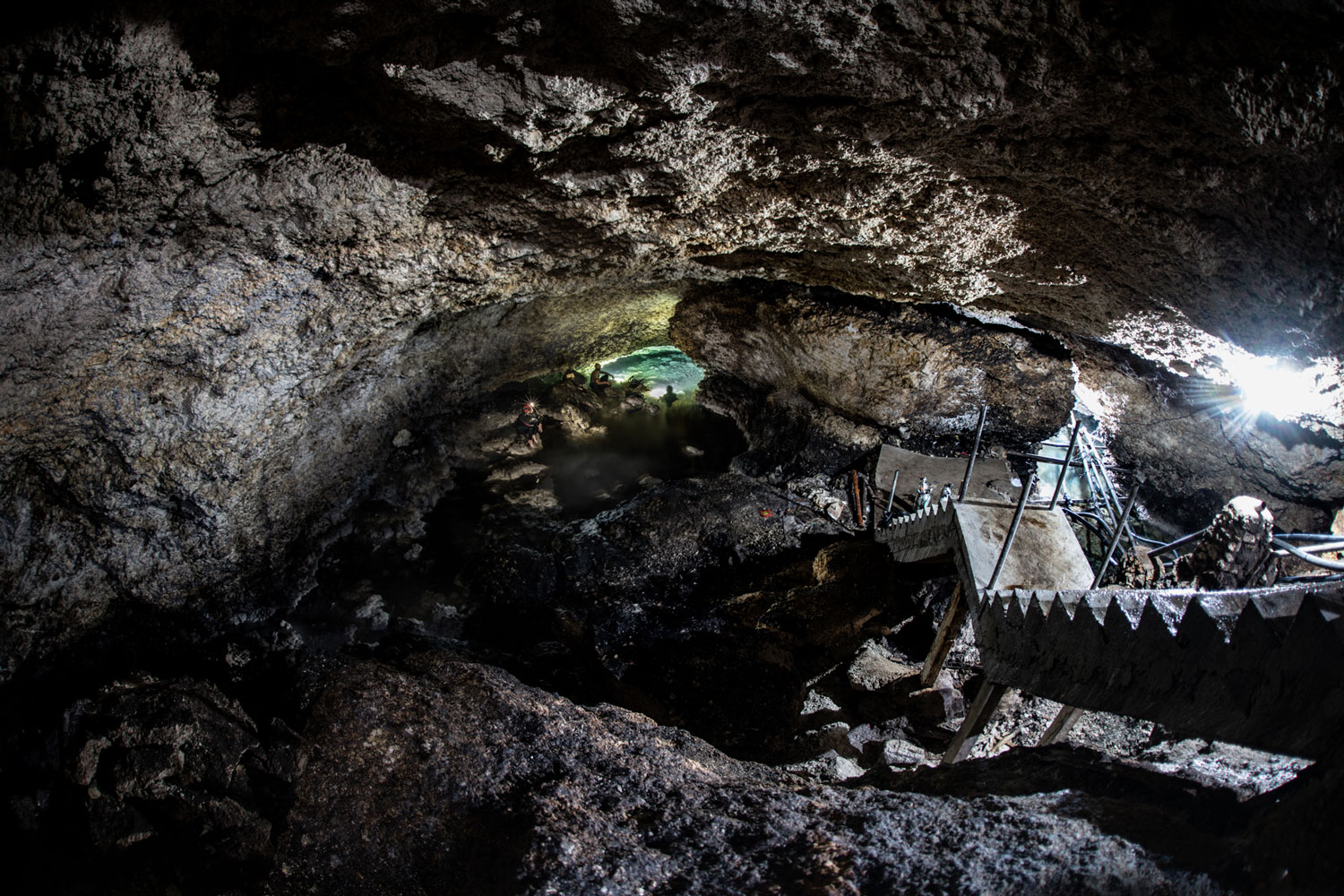
Muna entrance by Pete Mesley
Denéa S. Buckingham (moderator): So, in one month and one day, Expedition Buteng officially starts in Pulau Muna and this is an introduction to that expedition with Maria, Rannva, and Tamara, who have helped put this together. If you’d like to quickly introduce yourselves and what you’ll be doing on the expedition?
Tamara May: I’ll start, my name is Tamara May. I am originally from Australia, now living in Mexico, and I’m very excited for this expedition. My roles for this will be organizing the emergency planning, and I’ll also be on the diving team doing the mapping. Very excited!
Maria Bollerup: And my name is Maria Bollerup. I am from Copenhagen, Denmark and I am one of the project managers of Expedition Buteng and I will be diving on the science team collecting samples in the cave during the expedition.
Rannvá Tórfríð Jørmundsson: My name is Rannvá Jørmundsson. I’m originally from the Faroe Islands but currently live in the UK. I am also one of the divers on the expedition and one of the project managers together with Maria and I am also one of the science diverse collecting samples on the team.
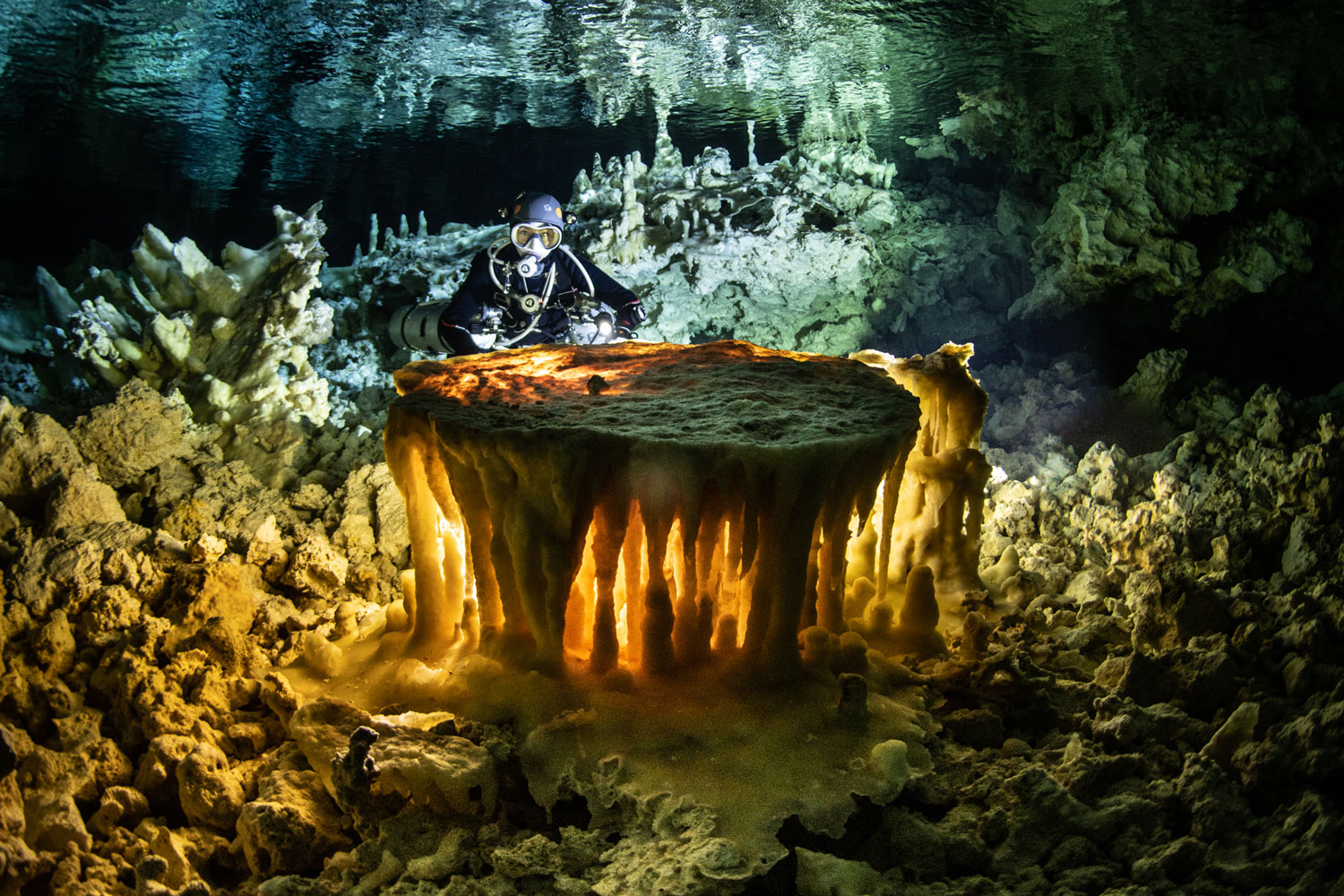
Stalactite formation in Laulawi cave by Pete Mesley
Amazing. Would one or all of you like to give me a little bit of background on how Expedition Buteng came about?
Maria: Absolutely. I am happy to start out with how it came about in 2020. Actually, the seed was planted in the ground when I was in Indonesia together with Pete Mesley, Rasmus Dysted, and Robin Cuesta, who was living out there and still is at the moment and scouting out new caves. Robin kept coming back to this one cave on the island of Pulau Muna that he knew was going to be running far because there was an old water pump in it. The pump was not running and he had been in the water already and he saw that it was very promising. So, by the end of this scouting trip out in Indonesia, we visited this cave.
We got permits from the local Bupati, the local chief of villagers, and got in the water. We saw the cave and it was just amazing and running big.
But it was also just before lockdown. So we came back, and we couldn’t go back out to Indonesia because of COVID. And Robin kept poking at us, asking if we would come assist him by mapping the cave because the local government wanted to see where it was running and how much water there was. And this just kept in the back of my mind, I constantly was thinking about this cave.
Then, in 2021, Rannva and I, together with Tamara, were part of the team for the Xunaan-Ha Expedition [in Mexico], and through this expedition—run by Robbie Schmittner—we learned so many things about cave expeditions with a purpose and the science involved. the whole what do you call it surrounding science?
So cave diving exploration with a purpose just lit this fire underneath us and after the expedition, actually, during Xunaan-Ha, I asked Rannva if she would join forces and set up an expedition in Indonesia with Robin locally and she said yes.
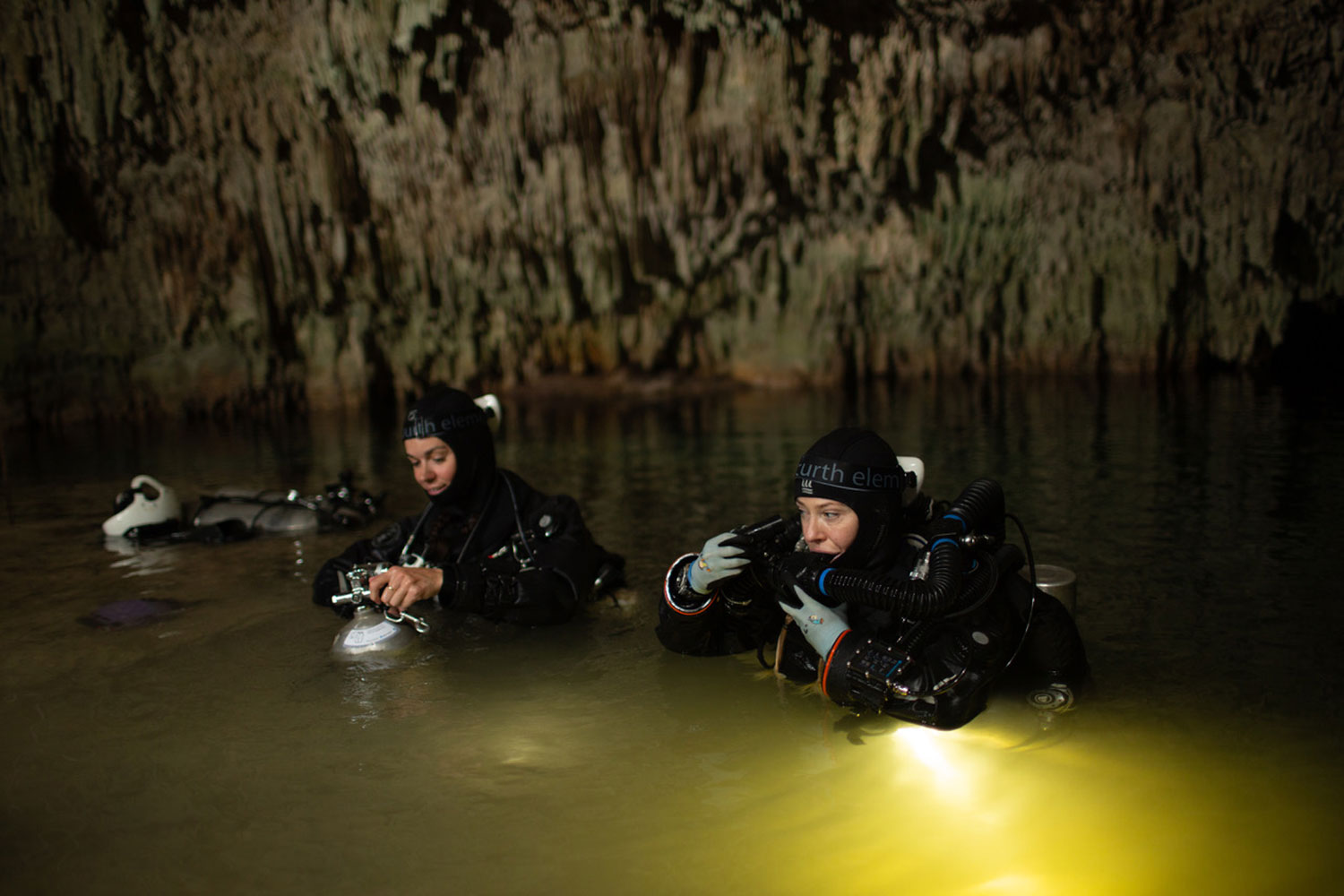
Rannva and Maria in Xunaan-Ha by Evan Whitney
So you mentioned diving with a purpose and I love that. I love the idea of it. Would you like to tell me a little bit about the purpose and the expedition goals?
Rannva: Yes, of course. Like Maria said, we learned so much from Robbie about how everything is connected and that was really something we took to heart. So, when Maria then says, ‘let’s go to Indonesia’, all you can say really is yes. But then we started dreaming up what we would do? Of course, there’s the invitation from the local government to find out what the cave is like, how much water there is, is it drinkable, can they use it for sustainable drinking water, but also, what’s the replenishment rate? Can they actually take [water] out and use it for drinking water?
Maria and I are not scientists so we said let’s team up with the largest university in Indonesia called UGM [Universitas Gadjah Mada]. We came to them and said, hey, here’s a bunch of cave divers who can be your hands and eyes within the caves, can you use us? And it was a big yes.
So, now we’re looking into hydrology, but also bio-speleology. We’re going to be using eDNA [Environmental DNA], which is really exciting. We’ve established a great partnership with Daniel Ortega from the Marine Genome Project and we’re also doing speleogenesis with our lead scientist Doctor Eko.
So, there’s a whole science section of it, but then there’s also the whole conservation part of it too, because, like Maria says, the whole area is incredible. It’s an ancient fossilized reef where there are 1m long giant clam fossils in the walls. Geologically, this area is unique and really worthy of preservation and conservation.
Despite the area being quite remote, the villagers are quite forward thinking in the sense that they’ve already sent a delegation to the closest UNESCO Geopark to see if they can replicate that in Pulau Muna. However, they can’t do it without the documentation that we can help supply.
Maria: And can we just pause for a moment and marvel over the lead scientist having a name so fitting as Doctor Eko? I love it.
Amazing!
Maria: We couldn’t have planned it better. I have to say though, Robin Cuesta is the guy who has tight ties with the Universitas Gadjah Mahda and a huge passion and love for the area and conservation of the cave.
And the preservation of community and water.
Rannva: Robin has lived and worked out there for eight or nine years and he literally moved there because of the potential of caves and karst. It’s a huge karst area as well. So, he really is an explorer in the truest sense of the word. We are thrilled to be working with him.
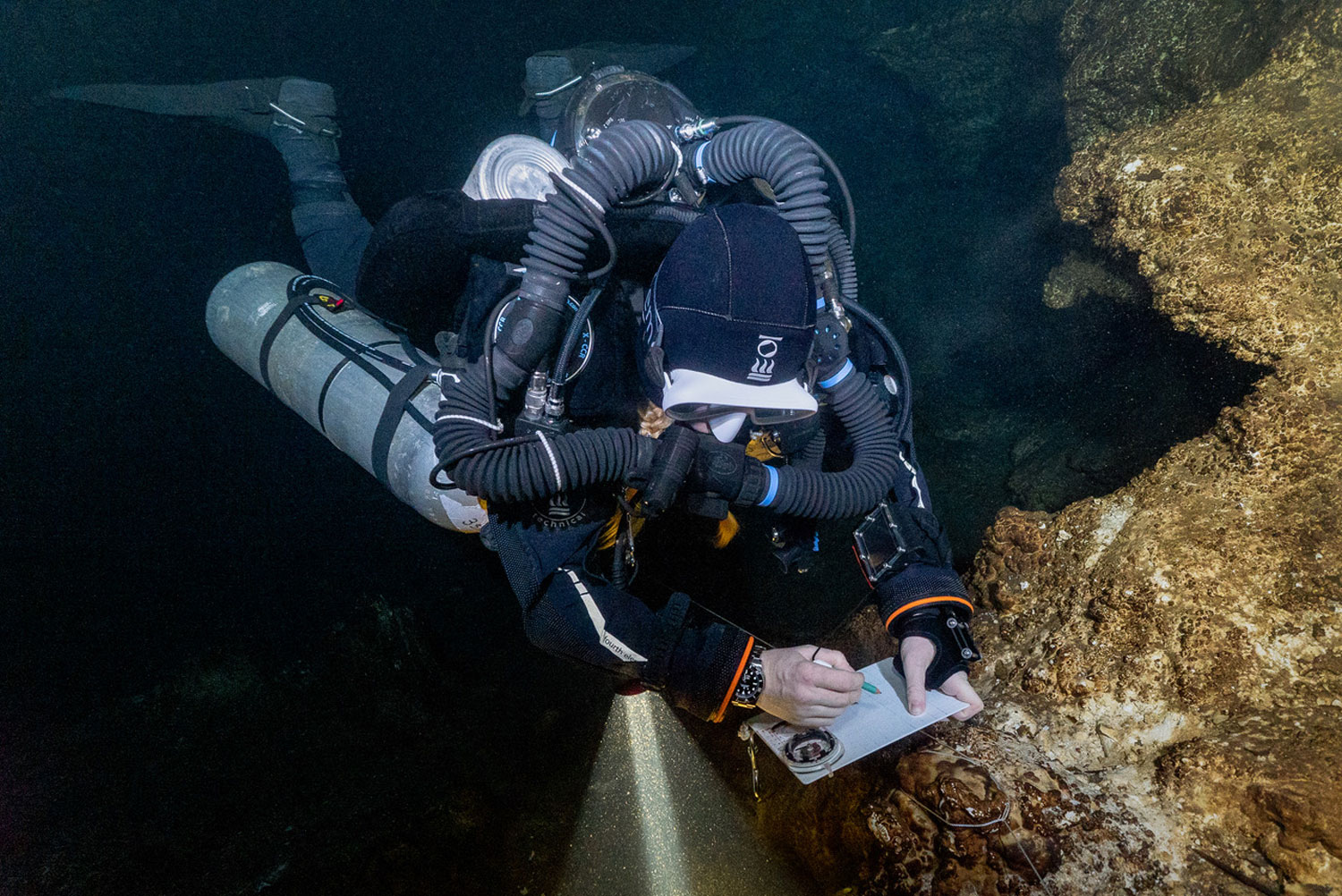
Rannva underwater in Xunaan-Ha by Tom St George 2
It seems very dynamic, you have so many different moving pieces and parts. How did you put the team together?
Maria: That was a process beyond. Tamara can tell you a little bit more about that later on—but we’re going to a very isolated area and the diving will be quite demanding. But also just Indonesia will have some…challenges in general, I think, thrown at us because we can’t source much when we’re out there. So we had to pick a team that was not just great cave divers but also great individuals. We have to have fun out there. And choosing people who can go with the flow was one of our biggest criteria. There are so many amazing explorers in our community, and to be honest, the process was really, really hard. But we needed to put together a team that we knew would be sitting well out there.
That actually segues extremely well into my next question, which is about those challenges and risks. I’d love to know what you foresee in that area. And then also how you plan to mitigate them because this is a pretty extreme thing that you’re doing. It’s far away in a remote area. It’s technical. It’s all manner of things.
And, Tamara, you mentioned earlier that you’re working on risk mitigation. As we’re writing for DAN Europe—who are the leaders in risk and diving safety (and I think we’re all proud DAN card-carrying members here)—I’d love to hear a bit more about how you’ve approached safety.
Tamara: With a project like this, just due to its remoteness, there are a lot of challenges and risks that come with remoteness and the type of diving we’re doing. We’re all on rebreathers. We don’t know where we’re going, or how far we’re going to be from home in the cave. Plus, we have, not only the diving team we have the dry cavers, so there’s a risk of physical injury there as well as diving issues. So, it’s an environment and we have to do the best planning and be as prepared as possible. That’s basically all that we can really do.
I’m in talks with DAN to set up worst-case scenarios and that’s where they come into play. DAN is going to be a great help in that way—the best we can do is just prevention.
So, we talk about dive schedules, there will be one for everyone and we will all know what each person is doing. And as long as we dive safely, we have all the items we can manage to get for first aid issues or Oxygen, we have things in place to prevent any serious issues. But of course, we have to plan in case something were to happen. That’s kind of the best that we can do. We are hours away from real help, so I think as long as we can make the first aid as efficient as possible, then that gives us all the best chance. I think we’re going to be fine, but we need to be prepared. So, yeah, a lot of challenges.
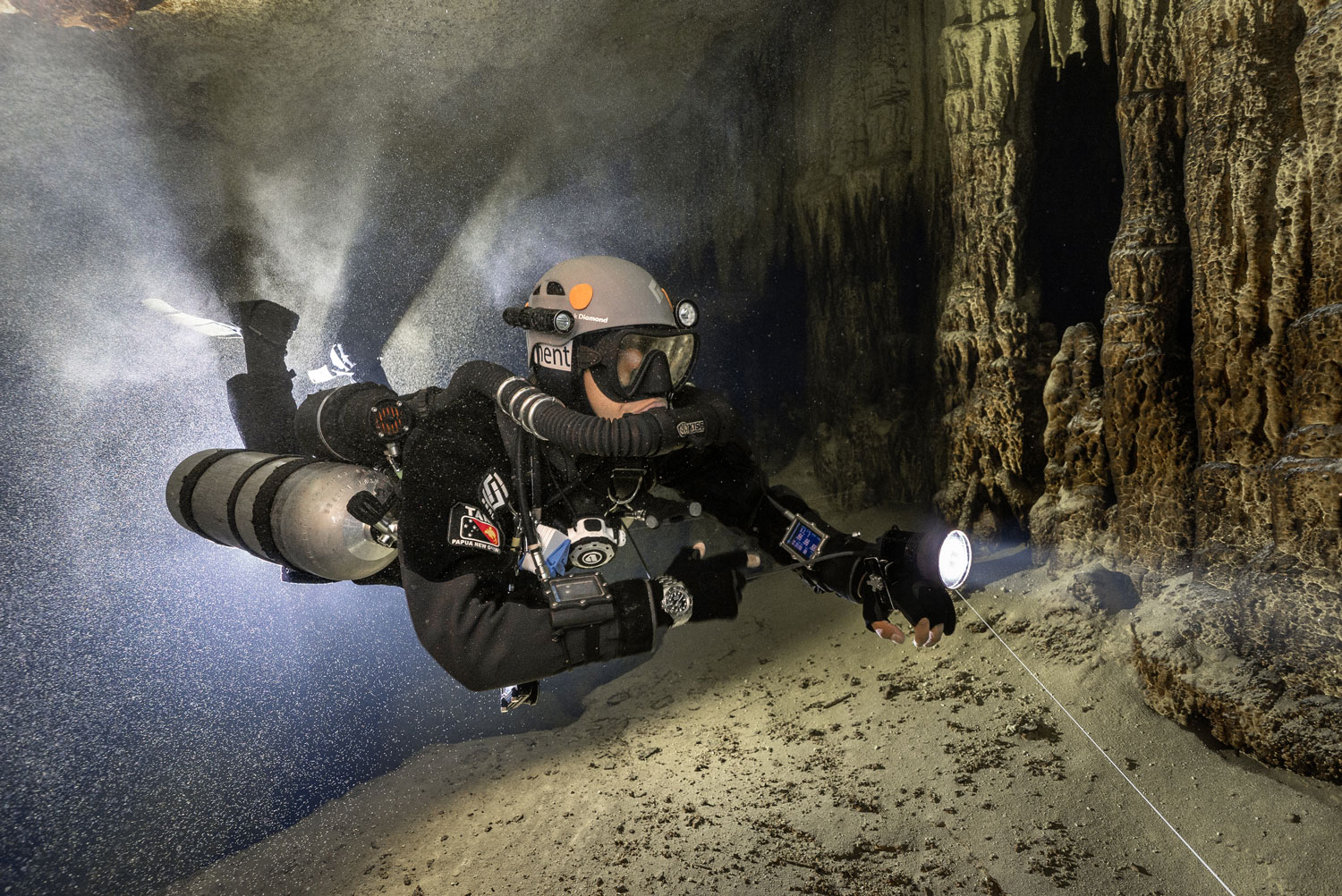
Tamara underwater in Xunaan-Ha by Tom St George
Definitely. And can you speak a little bit more to the role that DAN Europe specifically plays in our expedition as well as in the risk mitigation?
Tamara: Right. So, for DAN Europe, if there is an issue of any type for a diver, they would be our first port of call and they will be relaying what we should do with that diver, where they need to go for what type of treatment. DAN Europe is helping us to be as prepared as possible.
And we also have Rasmus Dysted as our expedition leader. He has a lot of knowledge in that area. So, we will be working together with DAN and Rasmus on safety. Without DAN Europe it would be pretty difficult.
They’ll be first on call to manage any situation.
Amazing, and moving to the more positive stuff ’cause, it’s what we’re all excited about—can you tell me what you’re most looking forward to each of you?
Tamara: For a project like this, of course, we want to see what we can find. That’s always a part of our makeup just as a diver, as a cave diver. That’s really interesting, but I think on the science aspect I’m super excited to see what we find and see if we can really make an impact on the local community.
But I’m probably most excited about the entire adventure. How we all work together as a team. I find this fun. I like adventures when I go exploring. I enjoy walking through the jungle. So, seeing how this is all going to unfold is quite interesting to me. You guys did pick an awesome team—the ultimate team—so I’m excited to meet them, and just how we can all work together.
Maria: I just can’t stop smiling because I am completely with Tamara on that part. I can’t wait to see how the mapping team engulfs the cave with their map. I can’t wait to see how Alex Dawson lights up that huge, massive open space underground. The underground river fascinated me from the first time I ventured into it.
It’s a very, very slow-flowing, super shallow river where you can actually get your gear off and walk around because it’s a huge room. And of course, it’s completely pitch-black darkness. But just to see Alex—with his and Magnus’ lighting skills and photography—create that room for the world to see. I’m very excited about that part. And of course the science. Coming back out, evaluating as we go along with the scientists because we’ll have fixed stations inside the cave from which we take samples. Then we come back out and report to the science team of any disruptions, etc. To tell them when something is kind of different there, then to come out and let them know, and then with that, evaluate where we go back when we go back in. That’s just all so exciting.

Rannva underwater in XunaanHa by Tom St George
Rannva: It’s hard to be the last one after this because like—yes to all of these things. I completely agree.
I’m really excited to be there and have the whole team assemble. I mean exploration will be wild, but there’s such a huge human aspect of it, too. So, being together with all these people and working together out there in the team, I mean—I’m sorry Tamara, I’m totally stealing your answer here—but I am really excited about it.
And then, of course, cave diving and exploration. Going in there and seeing all these things and seeing these fossils and just going and looking behind the next corner, finding out what’s there. I can’t wait.
And then hopefully we can make a real impact outside in the communities there as well.
We’ve already started talking to other organizations about how to continue the work post-expedition as well, so that we ensure it doesn’t stop after Expedition Buteng—that it continues. I’m very, very excited to see that this is just the beginning, hopefully, of a big, beautiful thing.
Perfect. And DAN Europe will follow along with us and we will follow along with everyone joining us through DAN.
Keep an eye out for more here on DAN Europe’s blog as we send updates from the field!
Moderator: Denéa S. Buckingham (Communications and Cultural Heritage Coordinator, Nixie Expeditions) @deneabuckingham
Participants: Rannvá Tórfríð Jørmundsson (Co-founder and scientific diver, Nixie Expeditions) @rannvaj
Maria Bollerup (Co-founder and scientific diver, Nixie Expeditions) @bollerup_gonediving
Tamara May (Emergency planner and mapping diver) @divelikeaninja
Website: www.nixie-expeditions.com


